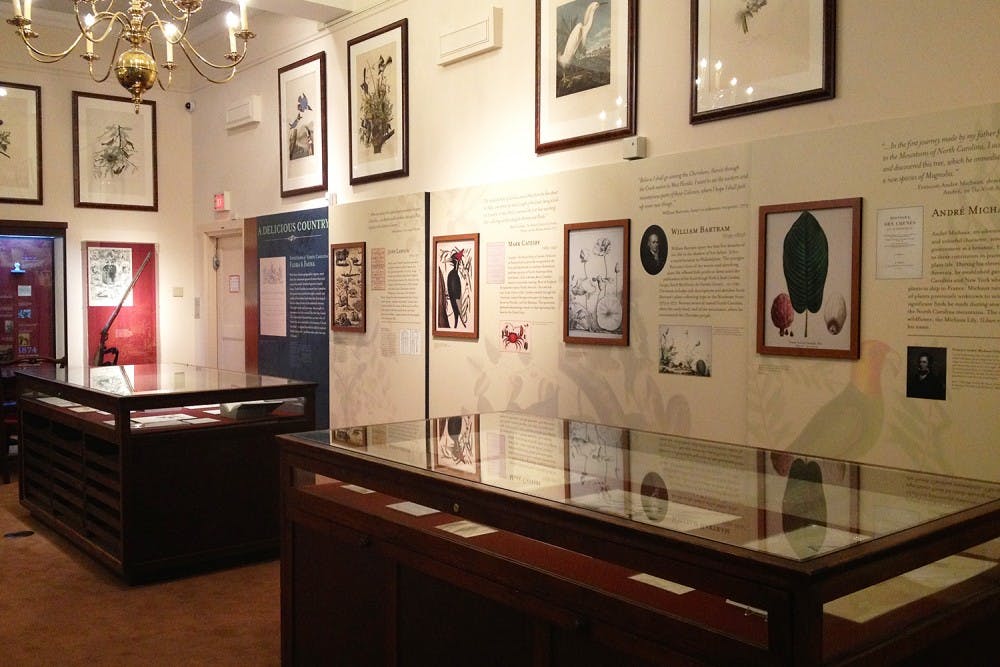“Following in the Bartrams’ Footsteps” is a traveling exhibition hosted by the botanical gardens in Chapel Hill and is running through Nov. 2. It is an exploration into the botanical, literary and scientific legacy of the father-and-son duo, John and William Bartram.
The Bartrams are considered the founding fathers of botany, and William is largely accepted as the first American natural history botanist.
“William was the first person to see and record some of the animals common to us today,” said Carol Woodin, director of exhibitions at the American Society of Botanical Artists. “He has an innocence and freshness to his work through which he invented himself and the way art continues to work today.”
The North Carolina Collection Gallery — located in Wilson Library — currently has three facsimile editions of Bartram’s illustrations on display, including the 1792 edition of his book “Travels.”
“‘Travels’ was inspirational to Thoreau and Charles Darwin, and it has this historical enlightenment connection that attracts people from the University and elsewhere who are interested in that historical theme,” said herbology professor Peter White, director of the botanical garden.
White said the exhibition has enjoyed great success so far and has been well attended, thanks to its interdisciplinary appeal.
“There are all kinds of things from lectures, which have been drawing 200 to 250 people at the weekends,” said White. “It attracts the botanical illustration crowd, the pure botanists, ecologists, conservationists and the scientists.”
White described the variety of opportunities available to guests, including the gardening workshops, plant identification workshops and other educational events.



